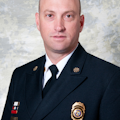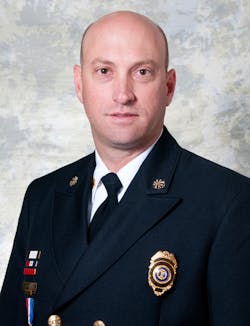Following all the attention of several large-loss fires in our major metropolitan cities and well developed suburban cities, I posed a question to some friends: When was the last conflagration in America that was not a wildland event? Their responses were actually additional questions related to what I considered to be a conflagration (dollar loss total, number of buildings, number of alarms, etc.).
The recent fires that capture the most attention seem to involve new wooden construction in our urban cities. Consider a seven-alarm fire in a major city. Is that a conflagration? Does it pose a threat to be one? How about a historical mill in an old city that requires the resources of several counties? What about four houses in a new subdivision in a small, growing town? I raise these questions so you will consider your hazard potential for one of these events. Further, what are we doing at the local, state and national level about the issue?
The problem with passion
We in the fire service tend to react to these types of events with a lot of passion (I’m certainly guilty of this), which is usually a good thing. However, I am not sure that our expression of that passion always works in our favor. I once gave (at least what I thought to be) a very passionate and convincing, well-articulated speech to our county commission about the impact of growth, and the balance of fire protection on the quality of life and the economy of our county. In this speech, I wasn't asking for money, more people, a new ordinance or anything. I was merely providing information from all the work we had done with our Economic & Community Development Committee, Planning & Zoning, Utility districts, builders, developers and fire departments.
After my self-proclaimed eloquent speech, I received a lot of good feedback from my team and my colleagues. However, the next day I learned from the county executive’s office that the county court clerks recorder (the person who takes the meeting minutes)—a nice lady who had known me and my family for years—commented that, “Shane was really angry at the meeting last night.”
As fire service leaders, we have to be sure that our message is heard, but that it is delivered in a caring manner that conveys our confidence with humility. Yes, I am still working on this. As the fire environment changes, as our communities change, as the political climate changes, and as all industries change, we must seek to learn, listen, share, inform and work diligently with all involved to make changes that improve fire and life safety.
Leaders of the past like John S. Damrell—former Boston fire commissioner, the first president of the International Association of Fire Chiefs, and honoree in the National Fire Heritage Center (NFHC) Hall of Leaders, Legends and Icons—worked diligently to stop conflagrations in his town and around the world. It is believed that with codes, standards and fire department improvements that we had almost eliminated conflagrations after the 1920s. Did we get a little too bold over the past 100 years? Are these fires a little lesson in humility for us?
It is my hope that the fire service will work with the International Code Council (ICC), the National Fire Protection Association (NFPA), the National Multi-Family Housing Council, the American Wood Council, the Structural Building Components Association, the American Paper Association, the Engineered Wood Association, the Gypsum Association, the Concrete and Masonry Associations, the National Fire Sprinkler Association (NFSA) and all other interested stakeholders to address these critical issues to keep us on track.
Keep working
I recently learned that I am, in political science terms, a pluralist and not a populist. We as fire protection experts must work to bring back our political respect and those who still have it, work to keep it, and groom your neighbors and successors. The one thing the fire service has always been consistently great at is solving problems, and these recent incidents are a reminder of the continual problems we still have to solve to stay safe and serve our communities well!
About the Author

Shane Ray
SHANE RAY has been a volunteer firefighter since 1984 and a career firefighter since 1994. He has also served as a mayor for six years and the Tennessee Fire Chief’s Legislative Chairman for 12 years. Ray’s love for politics started as fire chief of the Pleasant View Volunteer Fire Department in Tennessee, where he served 13 years. He then served under Governor Nikki Haley in South Carolina as superintendent and state fire marshal. He currently serves as the president of the National Fire Sprinkler Association and is a lifetime member of the Pleasant View Volunteer Fire Department. Throughout his career, he has been committed to public service with a “Do It Different” mentality and that all stakeholders are important.
